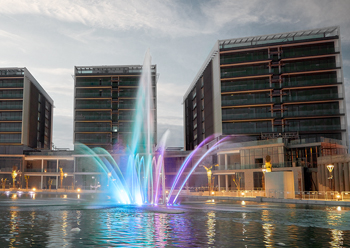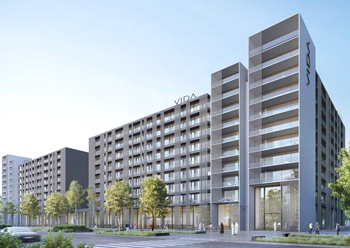
 Bhatia ... aiming for great tenant experiences.
Bhatia ... aiming for great tenant experiences.
The pandemic-induced focus on safety measures, social distancing norms and visitor access management – among other pressing concerns – has put commercial real estate (CRE) owners in a position that requires them to pivot quickly, to meet current and future needs. It’s telling that almost 56 per cent of CRE respondents to a 2021 survey stated that the pandemic exposed shortcomings in their organisation’s digital capabilities, and yet only 40 per cent confirmed that they had a digital transformation road map (1).
2020 exposed the extent to which our infrastructure was short of being ready for extreme disruptions, such as a pandemic. The pitfalls and shortcomings that became apparent, paved the way for a robust agenda for 2021 and beyond – one that uses smart, data-led operations to push a significantly different value proposition.
Early in the pandemic, following mandated lockdowns and entire industrial sectors in a state of uncertain shutdown, many real estate operations found themselves with empty shells that still needed to be maintained and kept ready for when staff and customers returned. The need to manage threats like leaks, vandalism and fire was a given but a new focus on optimising energy consumption for functions like heating, ventilation and air-conditioning (HVAC) and lighting, while maintaining critical systems, took precedence. CREs equipped with centralised digital command and control centres and integrated BMS (building management systems) suddenly found themselves in the position of strength.
An IoT-enabled integrated BMS (iIBMS) doesn’t just enable the unified management of building portfolios, it gives stakeholders a 360-degree view of their assets and the ability to manage their systems remotely, 24/7. Elevated control across services, and the capability to optimise process efficiencies give CREs a clear and verifiable return on investment (ROI) from their smart systems.
Wellbeing
In the wake of Covid-19, reassuring tenants and employees that the environment they live and work in is safe and conducive to their health, is more important than ever. Given the airborne vector of Covid-19, using smart sensors and Building Energy Management Systems (BEMS) to digitally monitor indoor climate conditions, and granularly track environmental variables like humidity, air quality and even occupancy levels in real-time, is gaining momentum.
For instance, AI-enabled occupancy sensing can be used to track building access and footfall, deploy usage-based sanitation protocols, and even track and isolate areas of potential exposure.
Smart cleaning
The cleaning services industry has been at the frontlines of the Covid-19 crisis but with social distancing protocols requiring fewer on-site operatives, keeping up with the unprecedented sanitation needs has been very challenging. With many firms set to double their cleaning expenditure the incentive to optimise cleaning using smart digital solutions is greater than ever.
Apart from adopting smarter monitoring and management to clean, CREs can efficiently deploy manpower using AI-powered occupancy analytics and demand-based systems, to empower workforces in real time.
Tenant experience
Remote monitoring, and the aggregation and analysis of real-time data, is enabling commercial real estate businesses to respond effectively to the constantly evolving challenges of the new normal. Beyond on-premises systems, relevant data can be hosted on cloud-based platforms, and leveraged to enhance occupant and tenant experiences, and maximise comfort and productivity with high-value digital services.
Cloud hosted apps that keep tenants updated and informed are playing an important role in restoring their confidence. Providing occupancy updates in common spaces, assisting in reserving meeting rooms, and being notified of facility issues using an intuitive user interface, empowers accountability. And responsive, interactive engagement is now a non-negotiable feature of optimal tenant experiences.
Plug and Play
Interconnectivity and interoperability have become must-have capabilities for building portfolios. While CREs are bringing pioneering advancements to newer buildings, transforming existing infrastructure has been a challenge – until now. IoT-based and wireless sensor networks, in combination with AI-embedded digital controllers, can now be retrofitted to old building stock, relatively inexpensively. Coupled with robust, scalable and seamless software-centric connectivity, deploying smarter, BMS on top of existing automation is no longer a daunting challenge.
These tech trends have empowered commercial real estate businesses to drive cost savings, enhance productivity, and achieve real-time asset optimisation. With game-changing machine learning and AI analytics at their disposal, CREs have the headwinds to go beyond the performance standards possible for older disparate systems, to create a newer smarter and agile model of operations.
1. https://www2.deloitte.com/us/en/insights/industry/financial-services/commercial-real-estate-outlook.html/
* Sanjeevv Bhatia is CEO of SB Group and its subsidiary Netix Global, an IoT and AI-driven advanced building automation systems provider.

















.jpg)













 (1).jpg)

















































